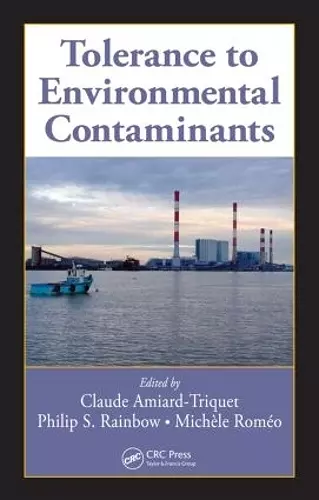Tolerance to Environmental Contaminants
Philip S Rainbow editor Claude Amiard-Triquet editor Michele Romeo editor
Format:Hardback
Publisher:Taylor & Francis Inc
Published:21st Jan '11
Currently unavailable, and unfortunately no date known when it will be back
This hardback is available in another edition too:
- Paperback£65.99(9780367383114)

Tolerance, the ability of populations to cope with the chemical stress resulting from toxic contaminants, has been described in many organisms from bacteria to fungi, from phytoplankton to terrestrial flowering plants, and from invertebrates such as worms to vertebrates like fish and amphibians. The building of tolerance, be it by physiological acclimation or genetic adaptation, can have great consequences for the local biodiversity, and hence the ecology and ecosystem functioning of many of the world’s habitats. Understanding the frequency of the occurrence of tolerance has tremendous implications for the sustainability of biodiversity and ecosystem functioning.
Tolerance to Environmental Contaminants takes a multidisciplinary approach across contaminant types, habitats, organisms, biological levels of organization and scientific disciplines. The book examines the general principles governing the acquisition and biological consequences of tolerance, genetically or physiologically based, at different levels of biological organization, taxonomically from bacteria and archaea to flowering plants and vertebrates, and within organisms from molecular biology and biochemistry through physiology to whole organism, community, and ecosystem levels of organization.
Presenting a state-of-the-art synthesis of the many aspects of the phenomenon of tolerance to environmental contaminants, this volume covers mechanisms of defense involved in the acquisition of tolerance, different classes of environmental contaminants, positive and negative ecological consequences of tolerance and the impact of tolerance in bacteria, plants, and insects on society. The reviews presented in this book supply the tools for carrying out more informed and therefore more reliable risk-benefit analyses when assessing the ecotoxicological risks to life in any of the contaminated habitats that now surround us in our industrialized society.
The species examined are very diverse ... Consequently, virtually every branch of the natural sciences is represented, making the potential readership considerable. Of very relevant interest is emergence of antibiotic-resistant bacteria, and insecticidal-resistance to DDT. Is resistance a function of DNA changes, changes in individual proteins, other structural changes, or a combination? These are the answers sought. ... it is a very valuable addition to the literature. It defines the multidisciplinary approaches necessary to educate advanced students of toxicology and environmental science by describing the complexities involved, and how to utilise logic to prevent the accidental (and sometimes deliberate) poisoning of the general environment. -K. Jones, in Chromatographia, 74:851 Books such as this serve an important function in showing how far we have progressed in a particular field. For that, we should thank the editors and authors and those who are pursing or considering pursuing research in this field must obtain a copy. Now we must hope that someone will take the next big step of developing a theory of acquired tolerance to environmental contaminants that leads to a useful assessment practice. This book could provide the jumping off point. -Integrated Environmental Assessment and Management, Volume 8, Number 3, 2012 SETAC "Overall, the book is well organised and the various articles (arranged into sections) offer a progression through a multiscale approach to contamination and risks for humans through the use of natural resources. Certainly, this is a state of the art synthesis that will be welcome by specialists but can also be of use to informed managers wishing to carry out risk-benefit analysis. Students will find a wealth of information there, both for preparing and revising exams and write essays." -Jean-Paul Ducrotoy, ECSA Bul lel;in 56 - Winter 1010
ISBN: 9781439817704
Dimensions: unknown
Weight: 771g
464 pages